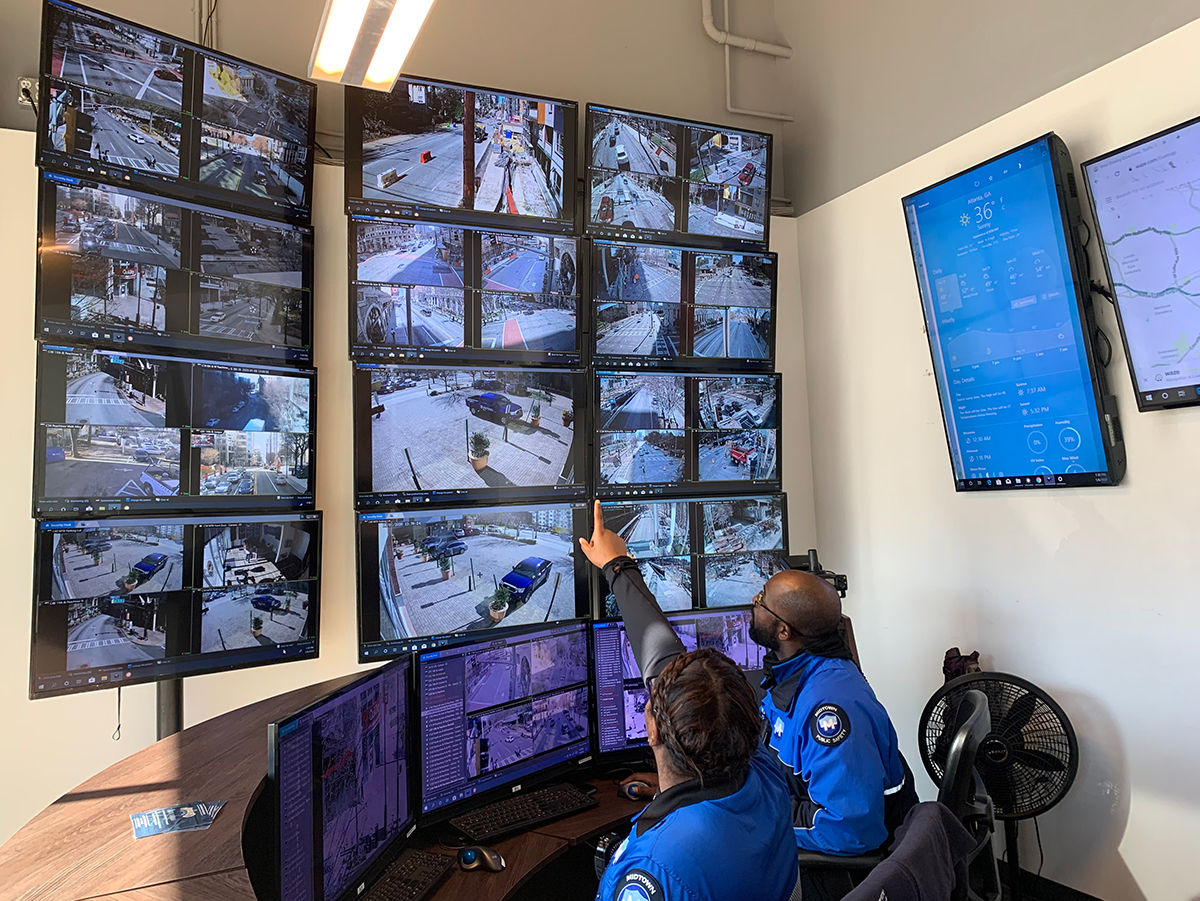Midtown Blue More Than Doubles Number of Public Right-of-Way Cameras
Published: 01/09/29
 Midtown Blue Public Safety Officers Kristian McClendon and Desmar Burton monitor live safety camera feeds.
Midtown Blue Public Safety Officers Kristian McClendon and Desmar Burton monitor live safety camera feeds.
Midtown Alliance’s video surveillance system in the public right-of-way is getting a major upgrade in 2020.
By the end of the first quarter, the total number of cameras in the Midtown Blue public safety program will more than double from 54 to 140. Many existing cameras are 10 years old or older and currently requiring frequent repairs, and these will be replaced or have their technology upgraded.
The network of high-definition video cameras Midtown Blue monitors is already the most extensive in the region, covering nearly 90 percent of the district’s public right-of-way. The system upgrade will allow Midtown to install four cameras watching each direction of monitored intersections, instead of one camera per intersection that must be pointed in the direction Midtown Blue public safety officers want to see.
Other new cameras will be added in intersections not covered in the past, as well as parks and public spaces.
Midtown Blue uses the cameras to accelerate its response times when public safety and transportation issues arise. While cameras may not help prevent a crime, they can help dispatchers pinpoint the exact location where a victim needs help and possibly identify perpetrators.
Midtown’s cameras feed into Atlanta Police Department’s Video Integration Center (VIC), a network of more than 5,700 camera feeds from all over the city. The VIC is one of a number of ways Midtown Blue works with the Atlanta Police Department to reduce crime, validating the success of public-private partnerships to keep people safer in Midtown and all over the city.
In addition to video surveillance, Midtown Blue’s team of civilian Public Safety Officers and off-duty APD officers contribute a combined 800+ hours each week of on-the-ground patrolling in the Midtown Improvement District. These and other strategies have helped ensure a safer community where 93% of the crimes that occur are nonviolent property crimes.